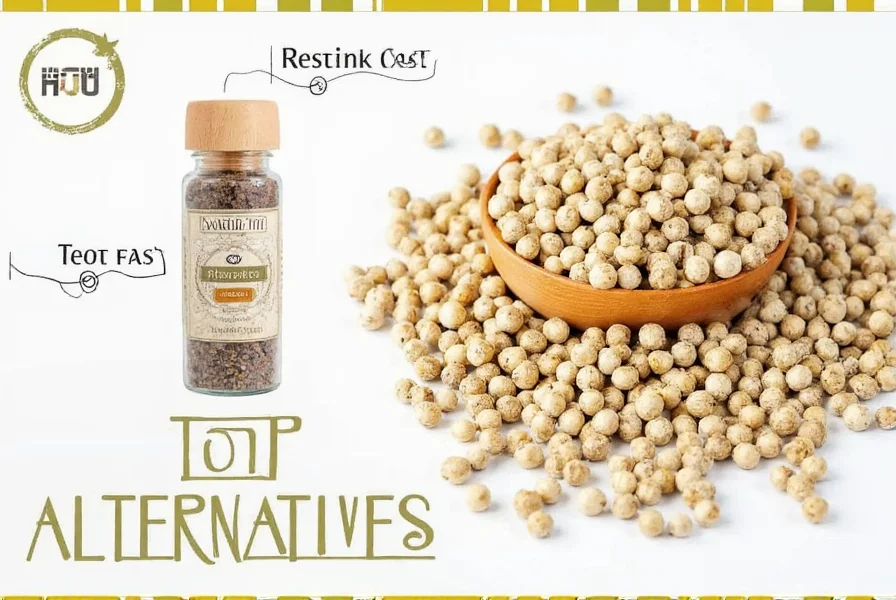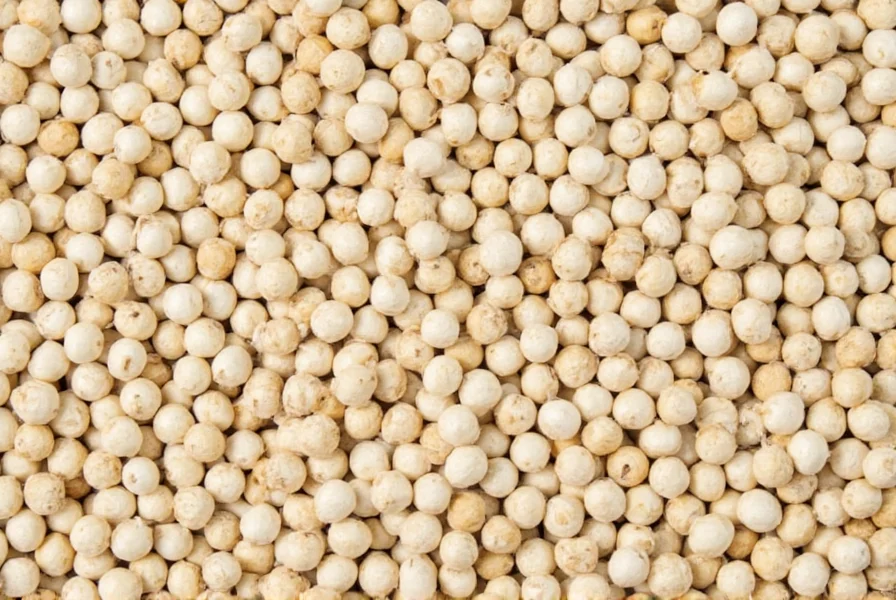White peppercorns offer a unique flavor profile that's essential in many culinary traditions, particularly in French and Chinese cuisines. When you find yourself without this specialty ingredient, knowing the right substitute can make or break your dish. Understanding the subtle differences between options ensures your recipes maintain their intended flavor balance.
Understanding White Peppercorns and Their Unique Qualities
White peppercorns are simply black peppercorns that have been soaked and fermented to remove the outer black hull, leaving only the inner seed. This process creates a distinct flavor profile:
- Milder heat compared to black peppercorns
- Earthy, slightly floral notes with less citrus
- Less pungent aroma
- Subtle fermented undertones
- Preferred in light-colored dishes where black specks would be visually unappealing
Chefs often choose white pepper for cream sauces, mashed potatoes, light-colored soups, and certain Asian dishes where visual presentation matters as much as flavor.
Top 5 White Peppercorns Substitutes Ranked
| Substitute | Flavor Comparison | Best Used In | Substitution Ratio |
|---|---|---|---|
| Soaked & Peeled Black Peppercorns | Nearly identical when prepared properly | All applications requiring white pepper | 1:1 |
| Green Peppercorns | Fresher, more herbal notes | Cream sauces, seafood, delicate dishes | 1:1 |
| Pink Peppercorns | Sweeter, fruitier, less heat | Salads, light meats, visual presentations | 3:4 (use slightly less) |
| Pre-Ground White Pepper | Less complex, more one-dimensional | Quick recipes, time-sensitive cooking | 3:4 (use slightly less) |
| Mixed Peppercorns | Complex blend of flavors | Robust dishes, meat preparations | 1:1 |
Detailed Substitute Analysis
Soaked and Peeled Black Peppercorns (Best Overall Substitute)
This method creates the closest approximation to authentic white peppercorns. Simply soak black peppercorns in warm water for 30 minutes, then rub between your fingers to remove the outer hull. Rinse and dry thoroughly before use. The resulting peppercorns deliver nearly identical flavor with only subtle differences discernible to trained palates. This white peppercorns replacement works perfectly in any recipe calling for the genuine article.

Green Peppercorns (Best for Fresh Applications)
Harvested before full ripening and preserved in brine or freeze-dried, green peppercorns offer a fresher, more herbal flavor profile. They work exceptionally well as a white peppercorn alternative in cream-based sauces, seafood dishes, and light-colored soups. For optimal results when substituting green peppercorns for white, add them toward the end of cooking to preserve their delicate flavor.
Pink Peppercorns (Best Visual Match)
Despite their name, pink peppercorns come from a completely different plant family than true peppercorns. They provide a similar visual appearance without the black specks, making them ideal for dishes where presentation matters. Their flavor is sweeter and fruitier with less heat, so they work best in salads, light meats, and dishes where a subtle peppery note is desired without overwhelming heat.
Pre-Ground White Pepper (Best Convenience Option)
While freshly ground white peppercorns offer superior flavor, pre-ground white pepper provides a convenient alternative when time is limited. The main drawback is reduced complexity and aroma compared to freshly ground. When using pre-ground white pepper as a substitute, use slightly less than the recipe calls for whole peppercorns, as the ground version has more concentrated flavor.
Mixed Peppercorns (Best for Complex Flavor Profiles)
A blend of black, white, green, and pink peppercorns creates a complex flavor profile that can work well as a white peppercorn replacement in robust dishes. The mixture provides depth and dimension that single-variety substitutes can't match. This alternative works particularly well in meat preparations, hearty stews, and dishes where visual presentation isn't critical.
Cooking Tips for Successful Substitution
When replacing white peppercorns in your recipes, consider these professional cooking tips to ensure optimal results:
- Timing matters: Add substitutes at different stages depending on their intensity. More delicate options like green peppercorns should be added later in cooking.
- Grind size: Match the grind size of your substitute to what the recipe specifies for white peppercorns.
- Taste as you go: Different substitutes have varying heat levels, so adjust quantities based on your taste preferences.
- Consider the dish color: For light-colored sauces and dishes, choose substitutes that won't create visible specks.
- Storage: Store any unused substitute peppercorns in an airtight container away from light and heat to preserve freshness.
Common Mistakes to Avoid
Even experienced cooks make these errors when substituting white peppercorns:
- Using black peppercorns without preparation in light-colored dishes (creates visible specks)
- Substituting equal amounts of pre-ground pepper for whole peppercorns (results in overpowering heat)
- Adding substitutes too early in cooking, causing flavor degradation
- Ignoring the visual impact of substitutes in presentation-critical dishes
- Using red peppercorns as a substitute (they're often artificially colored and lack authentic flavor)
When Substitution Isn't Recommended
While substitutes work well in most applications, certain traditional dishes truly require authentic white peppercorns. Classic French sauces like Béchamel and certain Chinese dishes rely on the specific flavor profile that only genuine white peppercorns provide. For these specialty applications, seeking out authentic white peppercorns is worth the effort.











 浙公网安备
33010002000092号
浙公网安备
33010002000092号 浙B2-20120091-4
浙B2-20120091-4